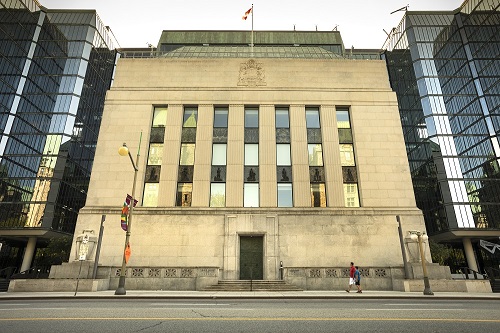|
|
Each Office Independently Owned & Operated

Posted by: Tony Passalacqua
|
|
Posted by: Tony Passalacqua
|
|
|
|
|
|
Posted by: Tony Passalacqua
 Beginning today, the Bank of Canada is lowering its target for the overnight rate by 50 basis points to 0.75%. The Bank Rate is correspondingly 1 percent and the deposit rate is 0.50 percent.
Beginning today, the Bank of Canada is lowering its target for the overnight rate by 50 basis points to 0.75%. The Bank Rate is correspondingly 1 percent and the deposit rate is 0.50 percent.
The unscheduled rate decision is the second in as many weeks. In a statement, the central bank stated this was “a proactive measure taken in light of the negative shocks to Canada’s economy arising from the COVID-19 pandemic and the recent sharp drop in oil prices.”
Last night, the US Federal Reserve made a surprise announcement in cutting its federal funds rate to a range of 0% to 0.25%. The US central bank also cited the negative economic impact from the coronavirus pandemic for its decision.
Separately, the Bank of Canada has teamed with five central banks to lower the pricing on the standing US dollar liquidity swap arrangements by 25 basis points.
Canada’s central bank announced on Sunday evening that it is working with the US Federal Reserve, the Bank of England, the Bank of Japan, the European Central Bank and the Swiss National Bank to ensure the new rate will be the U.S. dollar overnight index swap (OIS) rate plus 25 basis points. The central banks aim to increase the swap lines’ effectiveness in providing term liquidity by offering U.S. dollars weekly in each jurisdiction with an 84-day maturity, in addition to the one-week maturity operations currently offered.
These changes will take effect with the next scheduled operations during this week. The new pricing and maturity offerings will remain in place as long as appropriate to support the smooth functioning of U.S. dollar funding markets.
“The swap lines are available standing facilities and serve as an important liquidity backstop to ease strains in global funding markets, thereby helping to mitigate the effects of such strains on the supply of credit to households and businesses, both domestically and abroad,” said the Bank of Canada in a statement.
Posted by: Tony Passalacqua
 The planned change and review of the mortgage stress test has slipped down the priority list for the Canadian government due to the COVID-19 coronavirus crisis.
The planned change and review of the mortgage stress test has slipped down the priority list for the Canadian government due to the COVID-19 coronavirus crisis.
Until the outbreak, it was expected that Office of Financial Sanctions Implementation (OFSI) would consider changes after a consultation with stakeholders. It was hoped this would make the rate used to determine affordability for uninsured mortgages more dynamic instead of its current rigidity.
But OSFI said late Friday that, in unison with other government agencies, it was focusing on ensuring the resilience of Canadian financial institutions and the financial system.
“As a result, the benchmark rate as currently published by the Bank of Canada will remain in force until further notice,” OSFI said in a statement.
But it’s not just the review for uninsured mortgages that are affected.
“The Minister of Finance has also announced the suspension of the April 6, 2020 coming into force of the new benchmark rate used to determine the minimum qualifying rate for insured mortgages,” the statement clarified.
Maintaining credit supply
To ensure that Canadian financial institutions have enough liquidity to continue lending, OSFI has also cut its buffer requirements.
The Domestic Stability Buffer, which large financial institutions are required to maintain in case of financial crisis, was due to be 2.25% as of the end of April 2020 but this has been cut to 1% immediately and remain in place for at least 18 months.
The regulator says the release of banks’ funds from the buffer should be used for lending to businesses and households and not for shareholder distributions.
OSFI says that financial institutions’ dividend increases and shareholder buybacks should be halted.
Posted by: Tony Passalacqua
|